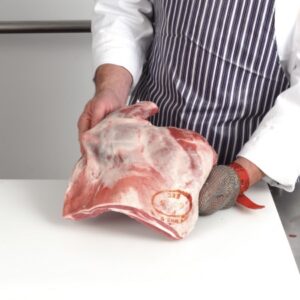CIEL | Case Study: Putting the best meat on the bones for UK beef & lamb
Genetics | Reproduction | Behaviour | Nutrition | Health & Welfare | Productivity | Food Integrity | Environmental Impact
Challenge
Carcase quality in the UK is currently assessed by the EUROP system, which is an indirect indicator of meat yield from the carcase based on visual assessment scores. Carcase evaluation is generally the basis for judging the commercial value of the livestock and is consequently one of the most common quality control tests carried out in the meat industry.
Action
CIEL was awarded a £100k grant from UK Research and Innovation (UKRI) to investigate how precision technology could be used to help address variability in carcase yield to improve the efficiency of processing and help farmers target premium grades.
The scoping study, led by CIEL in partnership with Tesco and the Agri-Food Biosciences Institute (AFBI), researched and assessed the feasibility of using precision technologies to provide a more accurate assessment of carcase value and eating quality.
The project team generated evidence on a range of technologies including video image analysis, DEXA scanning (using X-ray to measure fat, muscle & bone) and hyperspectral imaging (a combination of digital imaging and spectroscopy). All yield rich data and offer the potential to better identify more valuable carcasses.
Impact
Findings from the study were designed to help inform the future of meat grading and fast track the adoption of appropriate technology by the UK meat industry, leading to greater availability of high-quality meat products – driving future red meat consumption and helping producers secure better returns.







